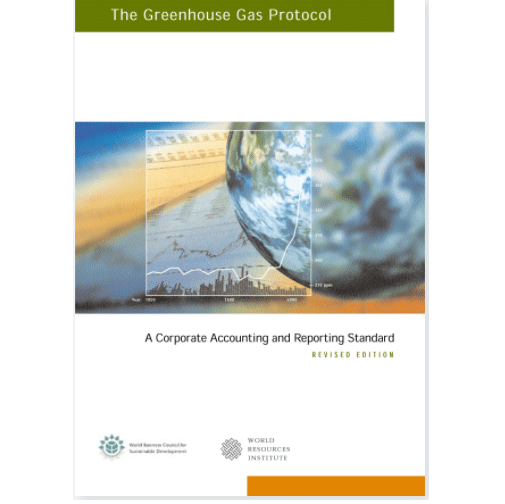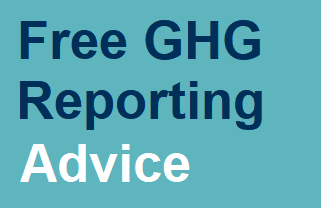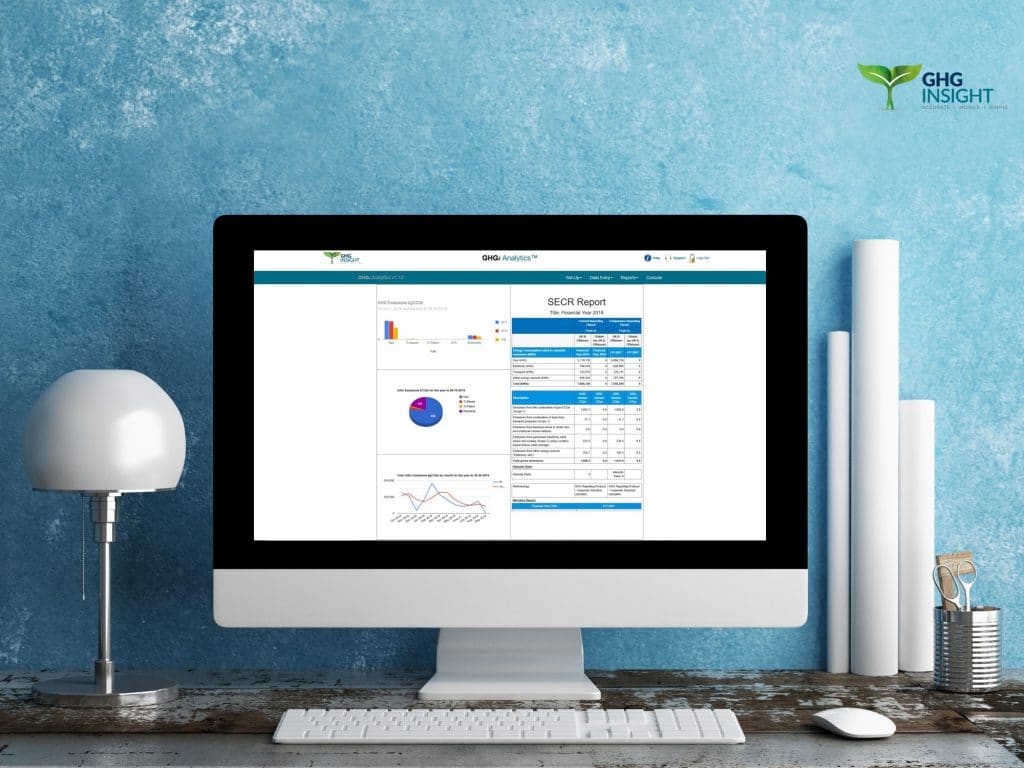Free Advice Session
+44 (0)1509 649 504
Greenhouse Gas Reporting
What is required and what you need to do
How you can minimise the effort needed to comply
Greenhouse Gas Reporting
Greenhouse Gas Reporting (GHG reporting) is also known as CO2e emissions reporting falls into two categories, mandatory carbon reporting and management carbon reporting.
Mandatory Carbon Reporting
The UK government’s Streamlined Energy and Carbon Reporting (SECR), has extended the scope of Mandatory Carbon Reporting to many more companies. It came into force on the 1st April 2019 requiring all large unquoted UK companies and large LLPs with financial years starting on or after that date, to report their greenhouse gas emissions under SECR.
The definition of large is the same as it is under the companies Act 2006 which is two or more of the following:
- More than 250 employees
- Annual turnover greater than £36m
- Annual balance sheet total greater than £18m
Balance sheet total in this case is Total Assets, not Net Assets.
What do I need to report?
Currently all large companies and large LLPs are required to report certain energy usage and carbon emissions under the Streamlined Energy and Carbon Reporting requirements. Quoted companies under the Streamlined Energy and Carbon Reporting (SECR) need to report their full Scope 1 and Scope 2 emissions.
Scope 1 Emissions are those direct GHG emissions that come from sources owned or controlled by an organisation. Mainly gas consumed on site and transport. Click here for more detail
Scope 2 Emissions are indirect GHG emissions from the consumption of purchased electricity, steam heating or cooling. Click here for more detail
Management Reporting
Recent focus on the UK government’s Net Zero initiative has encouraged many companies to measure their greenhouse gas emissions (CO2e emissions). In many cases the guidance provided by The GHG Protocol Corporate Accounting and Reporting Standard. Currently, most organisations are only measuring their Scope 1 and Scope 2 emissions, those that they either directly or indirectly control. This allow them to set both a benchmark for the path to net zero and also to measure their progress. For the time being this is generally considered acceptable.
This may change as more customers require their suppliers to include CO2e emissions and emissions reduction plans in supplier questionnaires. The pressure to include information on a number of Scope 3 emissions categories is growing. At the moment, the following categories appear to be the most significant:
- Category 4 – Upstream transportation and distribution
- Category 5 – Waste generated in operations
- Category 6 – Business travel
- Category 7 – Employee commuting
- Category 9 – Downstream transportation and distribution
Details of an organisation’s emissions in these Scope 3 categories are specifically requested in the UK government’s Procurement Policy Note 06/21. This policy applies to all government contracts over £5 million.
Getting the Information
The electricity or gas, the emissions can be calculated from the kWh used. This is usually found on a monthly or quarterly bill. There are complexities if a bill straddles a year end and meter readings are required. This is particularly with gas where the calculations required are more complex than for electricity. For transport, the litres or kilograms of fuel used are required. The UK Government provides factors to calculate the GHG emissions from the energy used.
Simplifying the Process of Greenhouse Gas Reporting.
GHGi Analytics simplifies electricity, gas and transport emissions reporting. It uses the correct and up-to-date government emissions factors. All you do is let the application guide you as you enter the data from gas and electricity bills. It does the rest.
GHGi Analytics is cloud based, which makes it easier for organisations to record their emissions centrally. This is particularly important for geographically dispersed companies. As it is cloud based, there is no need to access organisation’s internal network. A major cyber-security benefit.
GHGi Analytics holds emissions factors from prior years. As the factors vary over time, the impact of your efforts to reduce CO2e emissions might not be clear due to these changes. GHGi Analytics allows you to make year-on-year comparisons using the same emissions factors. This enables you to get an accurate picture of the impact of your efforts to reduce greenhouse gas emissions. For example, the impact of changes in the annual factor values on the emissions reported (e.g. the UK electricity factor changed by 20% from 2017 to 2018).
This cloud based service is designed to minimise your administrative overheads and save you money.
For more information call us on +44 (0)1509 649 504 or email us on info@ghginsight.com.
Sustainability Vision Ltd. takes the security of your data very seriously. Please read our Data Privacy Notice for further details.






